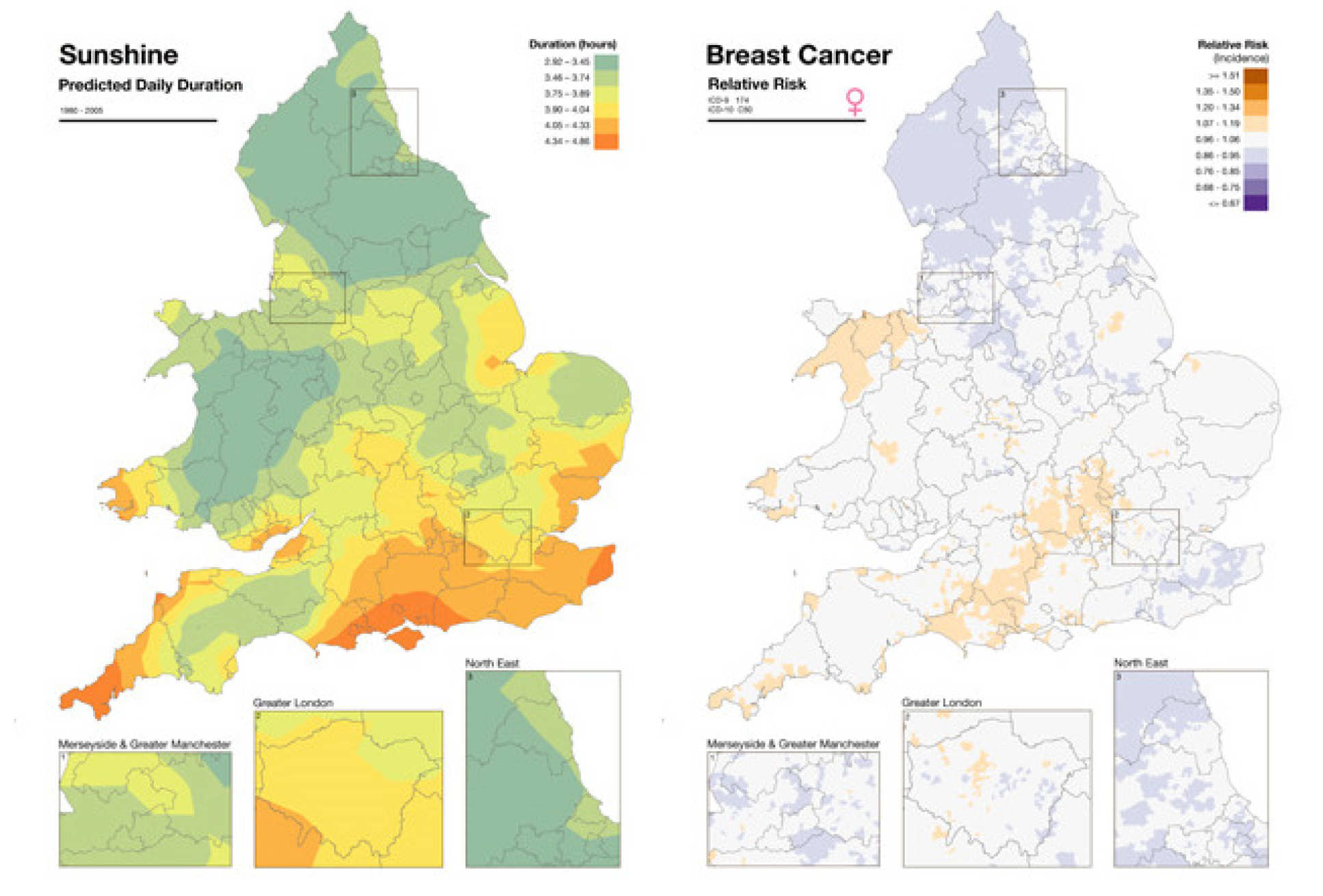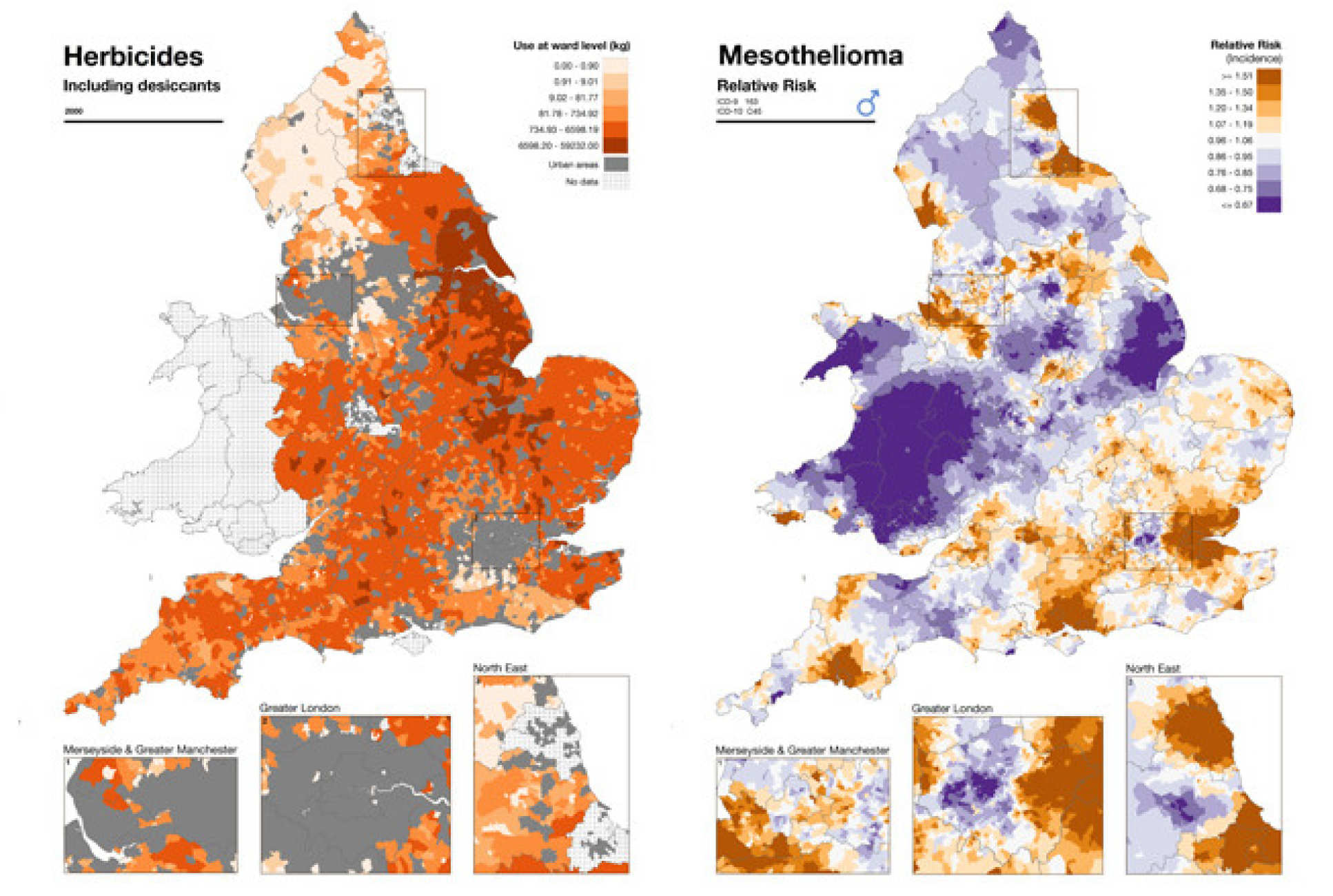Project Background:
SAHSU published an environment and health atlas for England and Wales on 24 April 2014. The atlas maps the spatial variation between areas for both long-term risks of 14 health conditions and levels of five environmental agents at a very high spatial resolution. These maps have been developed as a resource for the public, researchers and anyone working in public health and policy to better understand the geographic distribution of environmental agents and health conditions in England and Wales. The atlas is comprised of two sections: the first describing patterns of exposure to selected environmental agents and the second describing the geographic distribution of selected diseases, primarily cancers, at Census ward level (population ca. 5,000 people) over a 25 year period. Each set of maps are presented with short explanatory text to aid interpretation. The text highlights authoritative reviews and relevant major studies to help interpret any patterns seen in the maps.

Contents of the Environment and Health Atlas:
The Atlas provides readers with a detailed set of maps highlighting spatial patterns relevant to potential exposure. Currently, the following five environmental factors in England and Wales have been mapped. The choice of the environmental exposures is in part related to availability of data, as high-resolution information for many environmental exposures is not available at national scale.
- Pesticide usage on agricultural land
- Air pollution (NO2, PM10) levels
- Chlorination disinfection by-products in drinking water
- Radon exposure risk
- Sunshine duration
The spatial variation in long-term (25 years: 1985 -2009) risk for fourteen health outcomes in England and Wales has been mapped at ward level:
- Lung Cancer
- Breast Cancer
- Prostate Cancer
- Leukaemia
- Malignant Melanoma
- Bladder Cancer
- Mesothelioma
- Liver Cancer
- Brain Cancer
- Ischaemic Heart Disease Mortality
- Obstructive Lung Disease Mortality (COPD & Asthma)
- Kidney Disease Mortality
- Reproductive Outcomes
- Stillbirths
- Low birth weight
Health maps are presented separately for males and females (except breast cancer – females only; prostate cancer – males only).
Each set of maps are presented with a short explanatory text to aid interpretation. Comparison of patterns seen in the environmental exposure and health outcome maps can suggest hypotheses about possible associations, but cannot prove or disprove causation, which needs information from external studies. The text highlights authoritative reviews and relevant major studies to help interpret any patterns seen in the maps.
Buying the ATLAS:
The print version of the atlas was published by Oxford University Press on April 2014 and can be purchased.
If you wish to purchase the ATLAS please email the SAHSU team at sahsu@imperial.ac.uk and we can arrange payment and shipping.
ATLAS Online:
SAHSU have also created on-line version of the Atlas. This is complementary to the print edition. Via this interface, users are able to input a postcode and toggle between maps for environmental agents and health conditions and to compare this with other areas in England and Wales. The free interactive version of the Environment and Health Atlas can be found at https://www.envhealthatlas.co.uk
Benefiit to Public:
The atlas can assist in the development of hypotheses about the role of environmental factors in chronic disease and to inform public health research and action. The Atlas has been developed so that it is accessible to a range of audiences, including researchers and health professionals, policy-makers and the public. The online version of the atlas https://www.envhealthatlas.co.uk is freely available and has been designed to be accessible to members of the public to improve understanding of the geographic distribution of environmental agents and health conditions in England and Wales.
